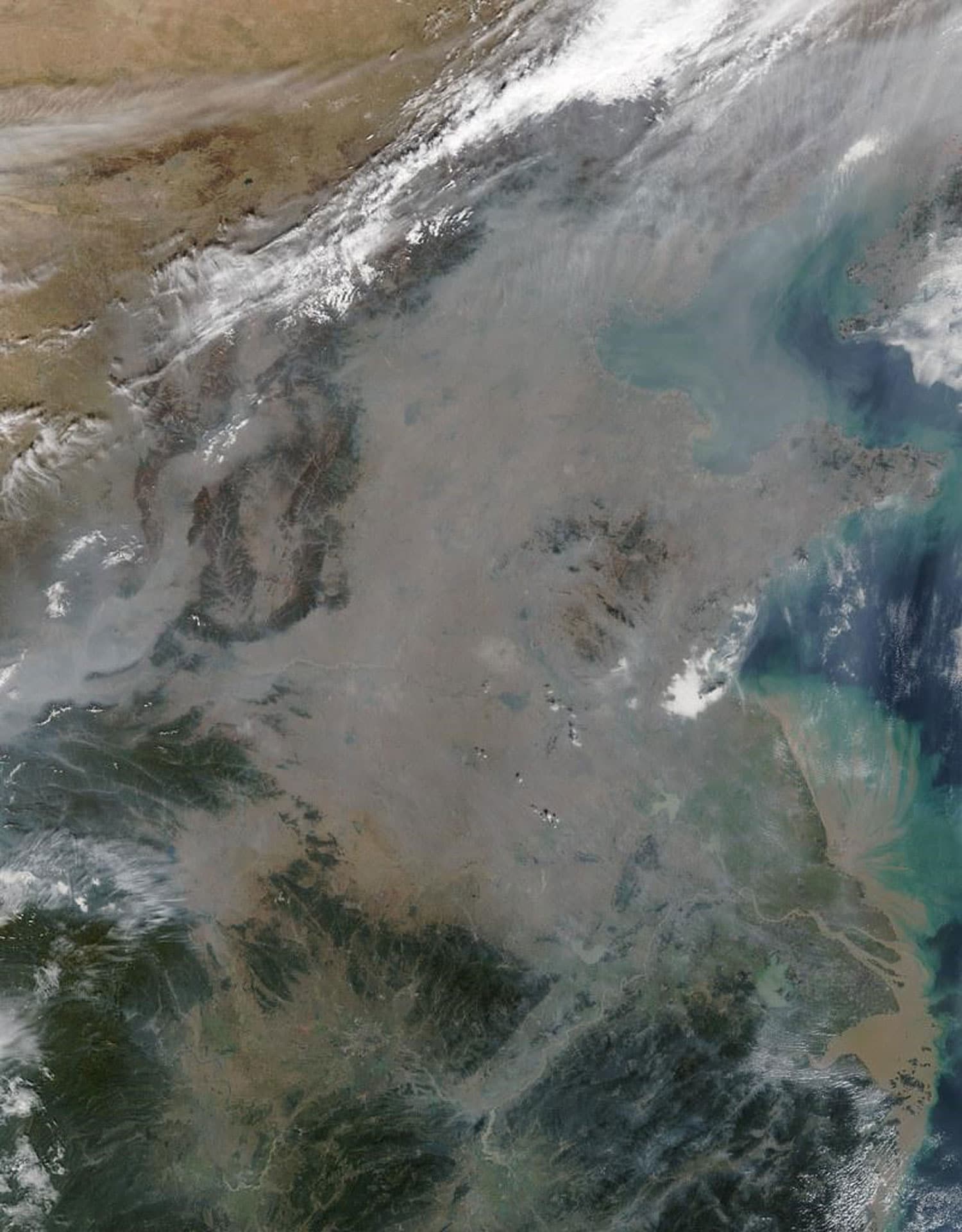Scientists have long known that ground-level ozone harms not only humans and wildlife but also crops. It’s well documented in experiments, but quantifying the scale of the problem globally has proven more difficult—until now perhaps. New research out this year finds the damaging impact of ground-level ozone on food production to be far more serious than previously estimated, particularly for smallholder farmers and in South and Southeast Asia.
Reducing pollution might be the best solution, but making crops more resilient could be faster or cheaper.
The good, the bad, and the ugly
Ozone in the stratosphere protects the planet from solar radiation–the good ozone layer. But at ground level, it’s a primary component of smog, which forms when fossil fuel emissions, particularly from internal combustion engines, react with sunlight. Ozone damages lungs, irritates airways, and is especially dangerous to people with asthma. It damages crops, as well, scarring leaves, inhibiting photosynthesis, and reducing crop metabolism. In other words, ozone can lower crop yields. But by how much?
“The large impact of O3 on crop production urges us to take mitigation action.”
In 2008, a European study modeled impacts of ozone on agricultural production from 2000 to 2030. It assumed that “currently approved legislation will be fully implemented by the year 2030, without a further development of new abatement policies,” the authors explained. They found that yield losses depended on crop type, but anticipated loss in food production was substantial. “Yield losses are estimated to range between 7% and 12% for wheat, between 6% and 16% for soybean, between 3% and 4% for rice, and between 3% and 5% for maize,” the study, published in the journal Atmospheric Environment, concluded. The models predicted that damage to crops from ozone would be felt worst in China and India, and that it would become increasingly problematic for Southeast Asian countries, but that economic damages would be felt globally—to the tune of up to $26 billion each year (https://www.sciencedirect.com/science/article/abs/pii/S1352231008009424).
That was the estimate made 14 years ago. Newer findings just released suggest that the 2008 study grossly underestimated the hit to agriculture from ground-level ozone.
Worse than previously assumed
In a new study now out in the journal Nature Food, lead author Zhaozhong Feng, a researcher at the Nanjing University of Information Science & Technology, and colleagues say ozone is robbing farmers of some $63 billion annually in East Asia alone. China is feeling the worst of it, they found, with estimated annual yield losses of up to 33% for wheat, 23% for rice, and 9% for maize. They see food security challenges looming for rapidly developing South Asian and Southeast Asian countries. “The large impact of O3 on crop production urges us to take mitigation action for O3 emissions control and adaptive agronomic measures,” they wrote (https://www.nature.com/articles/s43016-021-00422-6).
Feng et al. recommend tackling the growing threat of ground-level ozone through stricter air quality legislation and better monitoring of ozone levels in fields. Air quality legislation has been effective in some countries, but a review of existing literature reveals a gap in strategies to help farmers adapt to ozone, particularly smallholders.
Innovative ideas lacking
Some agronomists recommend adjusting crop watering schedules to avoid daylight hours or periods of heavier traffic, to encourage crops to metabolize at night or when the air is cleaner. This does nothing for farmers reliant on rains, so Feng et al. also calls on plant breeders to develop ozone-resistant crops. They say it could be done through simple selection without a need to create GMOs.
Perhaps someday everyone will drive an electric car powered by a nuclear fusion reactor. But for now, ozone pollution is getting worse in many regions and ensuring food security calls for a diversity of approaches. Grow Further is interested in supporting both agronomic and breeding adaptations to ozone pollution for smallholders farmers.
— Grow Further
Photo credit: Bad haze blanketing eastern China. NASA Goddard Photo.




